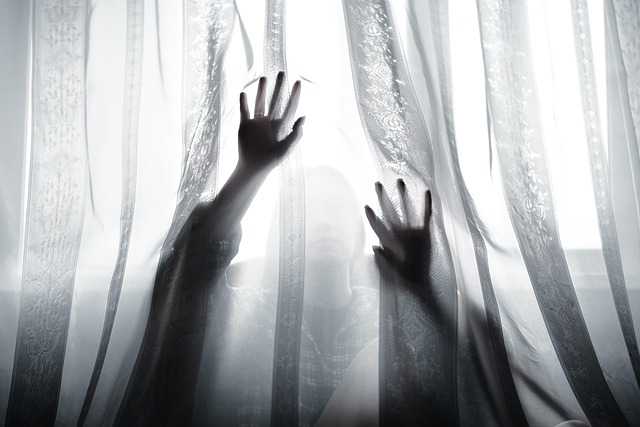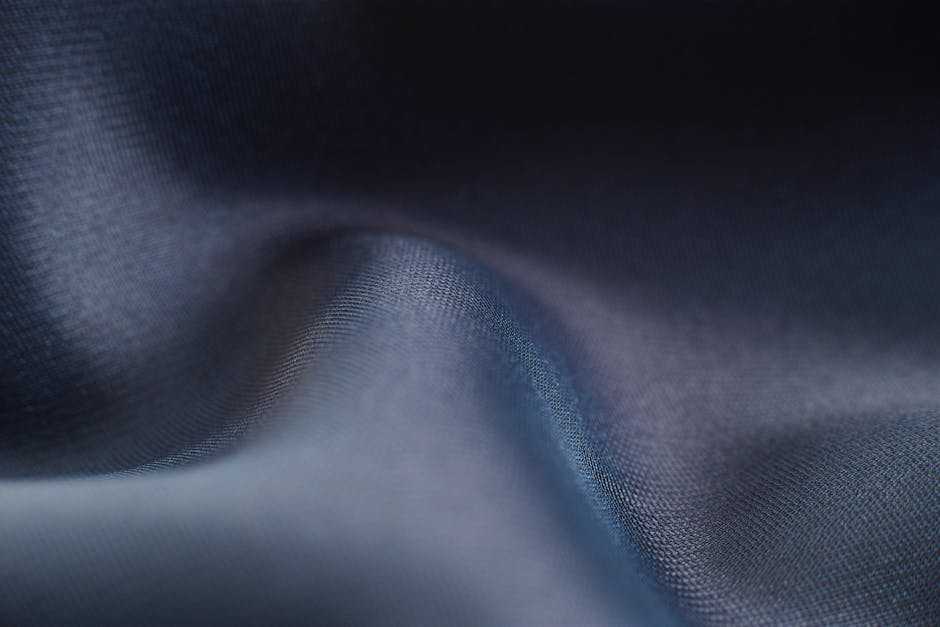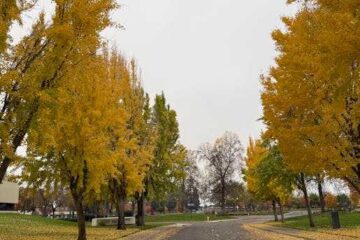bridal fabrics

Table of Contents
- Exploring the Elegance of Silk: A Timeless Choice for Bridal Gowns
- Understanding the Beauty of Lace: Crafting Intricate and Romantic Designs
- The Allure of Tulle: Adding Volume and Whimsy to Your Wedding Look
- Choosing the Right Satin: A Guide to Shine and Softness
- Innovative Fabrics for Modern Brides: Embracing Eco-Friendly Options
- Q&A
- Wrapping Up
Exploring the Elegance of Silk: A Timeless Choice for Bridal Gowns
When it comes to selecting the perfect fabric for bridal gowns, silk stands out as an exquisite choice that embodies luxury and sophistication. Known for its smooth texture and lustrous finish, silk provides an unparalleled elegance that enhances any wedding dress. It’s a fabric that drapes beautifully, allowing for a flattering silhouette, whether it’s a classic A-line gown or a modern fitted design.
Silk offers various types, each contributing unique qualities to bridal wear:
- Satin Silk: A glossy, smooth fabric that reflects light beautifully, making it ideal for formal occasions.
- Crepe Silk: Lightweight and slightly crinkled in texture, it offers a soft drape that moves gracefully, perfect for flowing gowns.
- Taffeta Silk: Crisp and structured, taffeta is perfect for gowns that need volume and support, making it a go-to choice for ball gowns.
- Chiffon Silk: Sheer and airy, chiffon layers effortlessly to create ethereal looks, often used in overlays or veils.
Additionally, the versatility of silk allows for endless customization options, from intricate embroidery to delicate beadwork. The adaptability of this fabric means it can be transformed from a simple design to a breathtaking masterpiece. The following table highlights a comparison of different silk types for bridal gowns, showcasing their attributes and ideal applications:
| Silk Type | Texture | Best For |
|---|---|---|
| Satin Silk | Glossy and smooth | Formal A-line gowns |
| Crepe Silk | Soft and flowy | Fit-and-flare styles |
| Taffeta Silk | Crisp and structured | Ball gowns |
| Chiffon Silk | Sheer and lightweight | Layered looks |

Understanding the Beauty of Lace: Crafting Intricate and Romantic Designs
Delicate and timeless, lace has long been a favored fabric in bridal fashion, encapsulating a sense of romance and intricacy that few other materials can achieve. The art of lace-making dates back centuries, and its diverse styles—from Chantilly to Alençon—each tell a unique story through their patterns and textures. Lace can transform any gown into a stunning masterpiece, enhancing its allure and ethereal quality. Its interplay of light and shadow creates depth, allowing the bride to radiate elegance on her special day.
When it comes to incorporating lace into bridal designs, the options are virtually limitless. Consider the following popular applications of lace in wedding attire:
- Gowns: Lace overlays can add an exquisite touch, making the fabric not only a decorative choice but also a significant part of the garment’s structure.
- Veils: A lace edge on a veil can beautifully frame the face and complement the gown, creating a harmonious look.
- Accessories: From delicate lace wraps to intricate lace gloves, these accents can complete a bridal ensemble with sophistication.
- Detailing: Adding lace appliqués or embroidery to bodices or skirts can elevate simple styles into show-stoppers.
Choosing the right type of lace for your bridal look is essential. Different lace types offer varying weights and patterns, which can affect the overall silhouette and movement of the gown. The table below highlights some common lace types and their characteristics:
| Lace Type | Characteristics |
|---|---|
| Chantilly | Lightweight, delicate floral patterns; ideal for overlays. |
| Alençon | Heavier, raised patterns; perfect for making a statement on gowns. |
| Venise (Guipure) | Thick and structured; often used for cutting out figures. |
| Brussels | Luxurious and intricate; showcases elaborate designs. |
Exploring the beauty of lace allows future brides to infuse their personalities into their wedding attire, making each gown a personal expression of love and artistry. The richness of lace, with its historical significance and aesthetic appeal, ensures that it remains a steadfast choice for brides wanting to celebrate their unique stories through fashion.

The Allure of Tulle: Adding Volume and Whimsy to Your Wedding Look
Tulle, with its delicate texture and airy feel, is a fabric that has enchanted brides for generations. This versatile material adds a touch of romance and sophistication to any wedding ensemble. Whether used in skirts, veils, or decorative details, tulle’s lightweight and flowy nature allows for creative expression in your bridal look. From full skirts that create a dramatic silhouette to layered accents that bring visual interest, tulle can be both subtle and striking, making it an ideal choice for various wedding styles.
One of the most enticing aspects of tulle is its ability to enhance volume without overwhelming the wearer. Brides often favor tulle for its capability to transform a simple gown into a statement piece. With the right styling, tulle can achieve stunning effects such as:
- Ballgown Silhouettes: Amplify your traditional princess look.
- Soft Layers: Add sophisticated intrigue with cascading designs.
- Whimsical Details: Create playful elements with intricate embellishments.
In addition to its visual appeal, tulle offers a myriad of ways to personalize your wedding attire. Various colors, from classic ivory to vibrant hues, allow brides to set the tone for their special day. Texture, too, plays a crucial role; consider pairing tulle with lace or satin to enhance the overall design. An easy way to visualize your options is through the following table that outlines popular tulle styles and their characteristics:
| Style | Description | Best For |
|---|---|---|
| Classic Tulle | Lightweight and sheer | Traditional gowns |
| Metallic Tulle | Glistening with embellishments | Modern or glamorous styles |
| Embroidered Tulle | Features intricate designs sewn into fabric | Romantic or vintage themes |

Choosing the Right Satin: A Guide to Shine and Softness
When selecting satin for bridal fabrics, the luster and texture play crucial roles in creating an enchanting gown. Different types of satin provide varying levels of shine and softness, which can significantly impact the overall aesthetic of the dress. For a classic look, silk satin is often favored due to its luxurious feel and rich sheen, giving a natural glow that complements the bride’s beauty. On the other hand, polyester satin offers a more budget-friendly option, often featuring a similar appearance while being more durable and easier to care for.
Another aspect to consider is the weight of the satin, as it influences both the drape and comfort of the gown. Lightweight satin works beautifully for flowy designs, allowing for graceful movement, while heavier satins help shape more structured silhouettes. Brides can choose from various finishes, including matte, shiny, and pearl, each offering a distinct look. Here’s a brief comparison of common satin types:
| Satin Type | Shine Level | Softness | Best For |
|---|---|---|---|
| Silk Satin | High | Very Soft | Classic gowns |
| Polyester Satin | Medium | Moderately Soft | Budget-friendly options |
| Charmeuse Satin | High | Soft | Flowy styles |
| Duchess Satin | Low | Firm | Structured designs |
Ultimately, the right satin choice will not only highlight your individuality but also enhance the overall design of your bridal look. As you explore options, remember to consider how each fabric interacts with your body type, the season of your event, and your personal style preferences. By weighing the characteristics of various satin types, you are sure to find a fabric that embodies both elegance and comfort, making your special day even more memorable.

Innovative Fabrics for Modern Brides: Embracing Eco-Friendly Options
The bridal fashion world is undergoing a remarkable transformation, with designers increasingly leaning towards textiles that promote sustainability without sacrificing style. Innovative fabrics such as organic cotton, hemp, and Tencel are becoming prominent choices among modern brides who prioritize both elegance and eco-consciousness. These materials not only reduce the environmental impact of wedding gowns but also offer unique textures and benefits, ensuring that every bride looks and feels her best on her special day.
Organic cotton is a standout option, renowned for its softness and breathability. This fabric is cultivated without synthetic pesticides, making it a healthier choice for the planet and the wearer. Another rising star is hemp, which boasts incredible durability and a unique, rustic charm. It requires significantly less water and energy to produce, highlighting a bride’s commitment to sustainability. Tencel, made from sustainably sourced wood pulp, is another fabulous alternative, known for its luxurious drape and biodegradable properties. These fabrics empower brides to make choices that align with their values while looking stunning on their wedding day.
There are numerous ways to incorporate these sustainable fabrics into bridal attire. Consider a gown made entirely of organic cotton or a chic reception dress crafted from Tencel to elevate your eco-friendly wedding theme. Accessories also play a vital role; pairing your dress with hemp or silk bridesmaids’ dresses not only adds to a cohesive aesthetic but reinforces a shared commitment to sustainable fashion. The inclusion of these elements showcases how modern brides can embrace beauty, charm, and eco-awareness all in one stunning package.
Q&A
Q&A: Understanding Bridal Fabrics Q1: What are the most popular types of bridal fabrics? A1: When it comes to bridal dresses, several fabrics stand out for their beauty and versatility. Among the most popular are satin, lace, chiffon, tulle, and organza. Satin offers a luxurious, smooth finish that drapes beautifully, while lace provides intricate detailing that adds a romantic touch. Chiffon is lightweight and airy, perfect for flowing silhouettes, and tulle gives a fairytale-like volume. Organza, known for its crispness, is often used for layered skirts or overlays.Q2: How does fabric choice influence the overall look of a wedding dress? A2: The fabric you choose plays a crucial role in defining the style and silhouette of your gown. Heavier fabrics like satin and silk create structured, elegant looks, ideal for formal ceremonies. In contrast, lighter fabrics like chiffon and tulle offer a more ethereal vibe, suitable for outdoor or bohemian weddings. The drape, shine, and texture also contribute significantly to how a dress feels and moves, allowing brides to express their unique style.
Q3: Are there specific fabrics better suited for weddings in different seasons? A3: Absolutely! Seasonality can greatly affect fabric choice. For spring and summer weddings, lighter materials like chiffon, tulle, and lace keep brides comfortable in warmer weather. Fall and winter brides may opt for heavier fabrics such as satin or velvet, which provide warmth and a luxurious feel. Consideration of the venue and climate is essential to ensure that both the bride feels good and looks stunning throughout the day.
Q4: How can I choose the right fabric for my bridal gown? A4: Choosing the right fabric requires consideration of your body type, wedding theme, and personal comfort. Start by trying on gowns in various fabrics to see how they make you feel. Consider how each fabric feels against your skin and how it drapes on your figure. It’s also important to think about the details, like whether you want embellishments that pair well with the fabric—and consult with a bridal stylist for expert advice!
Q5: What about sustainable choices in bridal fabrics? A5: Sustainable bridal fabrics have gained popularity as more brides seek eco-friendly options. Fabrics made from organic cotton, bamboo, or recycled materials provide environmentally friendly alternatives without sacrificing style. Additionally, vintage dresses or second-hand fabrics are excellent options that add character and history to the gown while reducing waste in the fashion industry.
Q6: How do I care for my bridal fabric after the wedding? A6: Proper care for your bridal fabric will help preserve it for years to come, whether for sentimental reasons or a vow to reuse it in the future. Always dry clean your wedding dress shortly after the event using a reputable service experienced in wedding gowns. Avoid long-term exposure to sunlight, as this can fade delicate fabrics. For storage, keep your gown in a cool, dry place, ideally in a breathable garment bag, to protect it from dust and damage.
Q7: Can I mix different fabrics for my wedding dress? A7: Yes, mixing fabrics can create a unique look that reflects your personal style! Many designers combine fabrics for diverse effects, like pairing a lace top with a satin skirt or using tulle layers over a heavier base. This approach not only adds depth and texture but also allows for creative expression in design. Just be mindful of the drape and movement to ensure they complement each other harmoniously.
By understanding the various bridal fabrics available, brides can make informed decisions that align with their vision and wedding day needs. Whether you’re aiming for classic elegance or modern flair, the right fabric will help bring your dream dress to life!




0 Comments